
Approvals & Conformities
The CE Mark
The Moflash products that show the CE mark, are deemed to comply, where applicable, with the EMC Directive 2014/30/EU and additional amendments, regarding Electromagnetic Compatibility which states that:
All electric devices or installations influence each other when interconnected or close to each other, e.g. interference between TV sets, GSM handsets, radios and nearby washing machine or electrical power lines. The purpose of electromagnetic compatibility (EMC) is to keep all those side effects under reasonable control. EMC designates all the existing and future techniques and technologies for reducing disturbance and enhancing immunity.
and the LVD Directive No: 2006/95/EC regarding low voltage electrical material which states that:
The Low Voltage Directive ensures that electrical equipment within certain voltage limits provides a high level of protection for European citizens, and benefits fully from the Single Market. It has been applicable since 20 April 2016. The LVD covers health and safety risks on electrical equipment operating with an input or output voltage of between: 50 and 1000 V for alternating current and 75 and 1500 V for direct current.
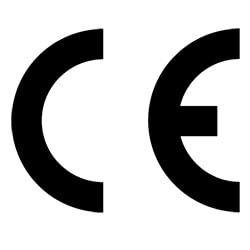

ICAO
- Convention on International Civil Aviation ICAO Doc 7300/5
- Annex 14-Aerodromes, Chapter 6, Table 6-3 (Appendix A)
- Characteristics of obstacle lights, Low-intensity, Type A, red
- General administrative regulation on the marking of aviation obstructions of 02.09.2004.
CAP168
Sets out the standards required at UK Licensed aerodromes relating to physical characteristics, assessment and treatment of obstacles, visual aids, rescue and fire fighting.
The Machinery Directive 2006/42/EC
These directives are designed to harmonise wide range health and safety requirements in machinery design and daily use by indicating a potential hazard by the use of an immediately recognizable audible or visual warning signal.
prEN 842 Safety of Machinery
Visual Warning Signals
Classifies the type of warning light and specifies the characteristics the warning light must achieve to conform to the machine directive.
Warning Signals
Visual warning signals must be at least five times brighter than the area where they are used.
Danger Signals
Clearly visible even in strong light, distinguishable from other lights and Visual warning signals and be understood immediately.
Emergency Signals
These have the highest priority and must be at least ten times brighter than the area that they are to be used in and understood immediately
IEC 60073 - Colours of Luminous Indicators & Push Buttons
Establishes the various meanings of coloured luminous indicators and push buttons to conform to the machine directive.
Colour: RED
DANGER ACT NOW
Danger of live or unguarded moving machinery or essential equipment in protected zone
Colour: AMBER
WARNING: PROCEED WITH CARE
Temperature of pressure different from normal level
Colour: GREEN
SAFETY PRECAUTION: GO AHEAD
Checks complete the machine is about to start
Colour: BLUE
SPECIFIC MEANING GIVEN DEPENDING ON SITUATION
Pre-set ready or remote control
Colour: CLEAR
NO SPECIFIC MEANING
Could confirm an earlier message
All Moflash coloured domes are manufactured from ‘UV’ stable polycarbonate plastic that will not tarnish, fade or become brittle over a period of time unlike many domes available that are produced from Acrylic plastic.
RoHS (Restriction of Hazardous Substances)
The RoHs directive 2011/65/EU of the European Parliament and of the Council of 8 June 2011 on the restriction of the use of certain hazardous substances in electrical and electronic equipment you should also take note that the following substances listed below are also restricted:
| Hazardous Substance | Allowed PPM Level |
|---|---|
| Cadmium (Cd) | 100ppm (0.01%) |
| Lead (Pb) | 1000ppm (0.1%) |
| Mercury (Hg) | 1000ppm (0.1%) |
| Hexavalent Chromium (CrVI) | 1000ppm (0.1%) |
| Polybrominated Biphenyls (PBB's) | 1000ppm (0.1%) |
| Polybrominated Diphenyl Eithers (PBDE's) | 1000ppm (0.1%) |
| Bis(2-Ethylhexyl) phthalate (DEHP): | max 0.1% |
| Benzyl butyl phthalate (BBP) | max 0.1% |
| Dibutyl phthalate (DBP) | max 0.1% |
| Diisobutyl phthalate (DIBP) | max 0.1% |
Moflash conforms to the RoHs Directive and subsequent additional amendments.
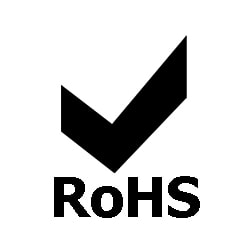
WEEE Directive
The WEEE (Waste Electrical & Electronic Equipment) Directive aims to encourage a sustainable approach to the manufacture and disposal of classified electronic and electrical products and places certain obligations on producers of these products. The principle behind the legislation is simply to remove some of the responsibilities for disposal costs from the end user to the producer, to facilities improvements in environment performance.
WEEE applies to electrical and electronic equipment that is dependent on electric or electromagnetic fields and designed for use with a voltage rating not exceeding 1000 volts for alternating current and 1500 volts for direct current, for equipment falling into the following categories:
- Large household appliances
- Small household appliances
- IT and telecommunications equipment
- Consumer equipment
- Light equipment
- Electrical and electronic tools
- Toys, leisure and sports equipment
- Medical devices
- Monitoring and control equipment
- Automatic
Moflash conforms to WEEE Directive 2012/19/EU and subsequent additional amendments.
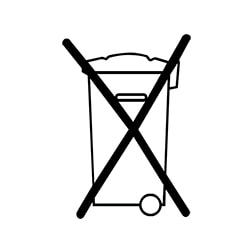
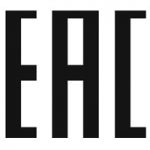
The Eurasian Conformity mark (EAC) is a product marking to indicate that products conform to all technical regulations of the Eurasian Customs Union assessment procedures. This means that it meets all requirements and technical regulations relevant to the product within this scope. The mark came into use in August 2013 and is mainly in use in Russia and some surrounding countries.
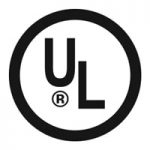
The UL mark is a globally recognised approval (a must have to sell in to the US and Canada market) and with more than 120 years of history behind it. UL is a brand that covers a whole range of different standards, much like BSI. In the case of Moflash (Clifford and Snell) this relates to the fire market with products having approvals such as UL 1638 (Visual Signalling Devices for Fire Alarms) and UL 464 (Audible Fire Alarm Signalling Systems).
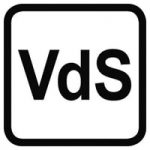
VdS is an independent institution which has been ensuring safety and trust in the fields of fire protection and security for many decades. Products that are planning to use the VdS Quality Seal must pass practical endurance tests within German VdS laboratories including real test fires.
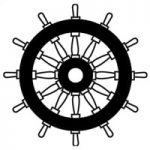
The MED (Marine Equipment Directive) sets out performance and testing standards to be met by marine equipment placed on board an EU ship. The legislation written by the European Commission ensures the quality of marine equipment placed on board European Ships. The aim of the Directive is to increase marine safety and reduce the risk of marine pollution. Directive 2014/90/EU stipulates that marine equipment to be installed on new or existing ships shall be approved to, and bear the MED mark of conformity “Wheel Mark”.
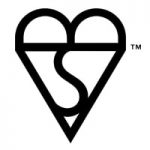
The Kitemark is a UK product and service quality trade mark owned and operated by BSI (British Standards Institute). The Kitemark is most frequently used to identify products where safety is key. In the case of Moflash, the Kitemark applies to the Clifford and Snell range of Sounders and Beacons. The Kitemark was first used as a symbol in 1903 to identify products manufactured to meet British Standards’ specifications. “Kitemark” came from the kite shape of an uppercase B (for British) on its back, over an S (for standard), enclosed by a V (for verification)

We are BSI ISO 9001 Approved. View the certificate by clicking the link below.
FM 558977
